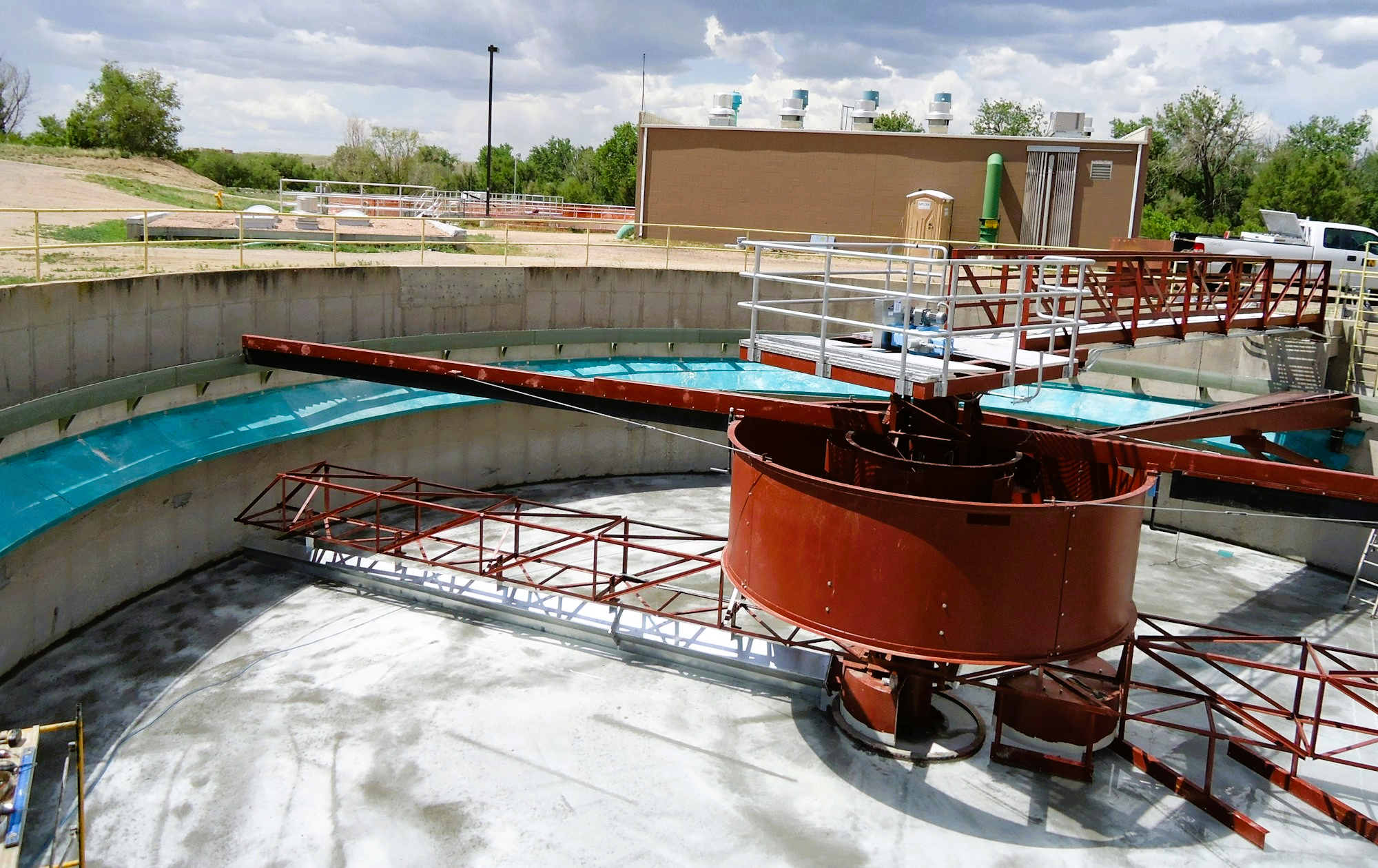Wastewater Treatment Plant History

The Widefield Water and Sanitation District (WWSD) owns and operates a wastewater treatment plant located on the north side of the City of Fountain. The Wastewater Treatment Plant provides secondary treatment, a process that uses large round tanks to allow for solids to separate from water through the use of gravity, for a population of approximately 18,000 people within its district boundaries.
The existing Wastewater Treatment Plant (WWTP) is currently rated for a hydraulic design capacity of 2.5 million gallons per day (MGD) and organic capacity of 5,416 lb/day Bio Chemical Oxygen Demand BOD under Site Application #4417 MGD. Since the WWTP’s original construction in the early 1940’s, the facility has undergone multiple improvements. A brief summary of these improvements are as follows:
| 1950s | The WWTP is constructed under site application #4417 by the Widefield Homes Water and Sanitation Company. The WWTP was constructed as the community of Widefield, established for soldiers and their families stationed at Fort Carson following the end of World War II. The original WWTP was a large facultative lagoon system. |
|---|---|
| 1979 | The conversion of the existing facultative lagoon system to a more modern system using bacteria that consume disease causing pathogens was through a process known as return activated sludge. WWTP modifications included the conversion of the concrete clarification chamber to an aeration basin, construction of a new RAS/WAS pump station, construction of a new secondary clarifier, construction of sludge drying beds, and provision of a new earthen digester. |
| 1996 | The construction of a new blower building, steel air lines, and provision of new sanitaire diffusers in the aeration chamber. |
| 1998 | The WWTP was expanded to a 2.5 MGD. Expansion included the provision of a new headworks facility (complete with screenings and grit removal), primary clarifiers with primary sludge pumps, conversion of a portion of the aeration basin to an anoxic zone for future denitrification, construction of a second final clarifier, and construction of a new aerated digester facility. |
| 2005 | The construction of a new blending vault and drum thickeners to replace the existing centrifugal thickening equipment. |
| 2008 | The replacement of the existing shear tubes in the aerated digester with coarse air bubble diffusers. |
| 2010 | The replacement of the original clarification equipment provided with the modifications package. |
| 2012 | The replacement of the original gas chlorination equipment with a liquid Chlorination facility to meet E. Coli effluent limitations. |
| 2019 | Biological Nutrient Removal (BNR) upgrade - To meet increasing regulatory demands by the State, the facility's treatment process was converted to a traditional A2O (Anaerobic, Anoxic, Oxic) design that allows for the removal of Total Nitrogen and Total Phosphorus through a biological process. A new dewatering facility was completed with two new screw presses and associated conveyor loading bay. |
.jpg?ixlib=rb-1.1.0&w=2000&h=2000&fit=max&or=0&s=236a41e8d51eadfa91b6962178dcbc33)
